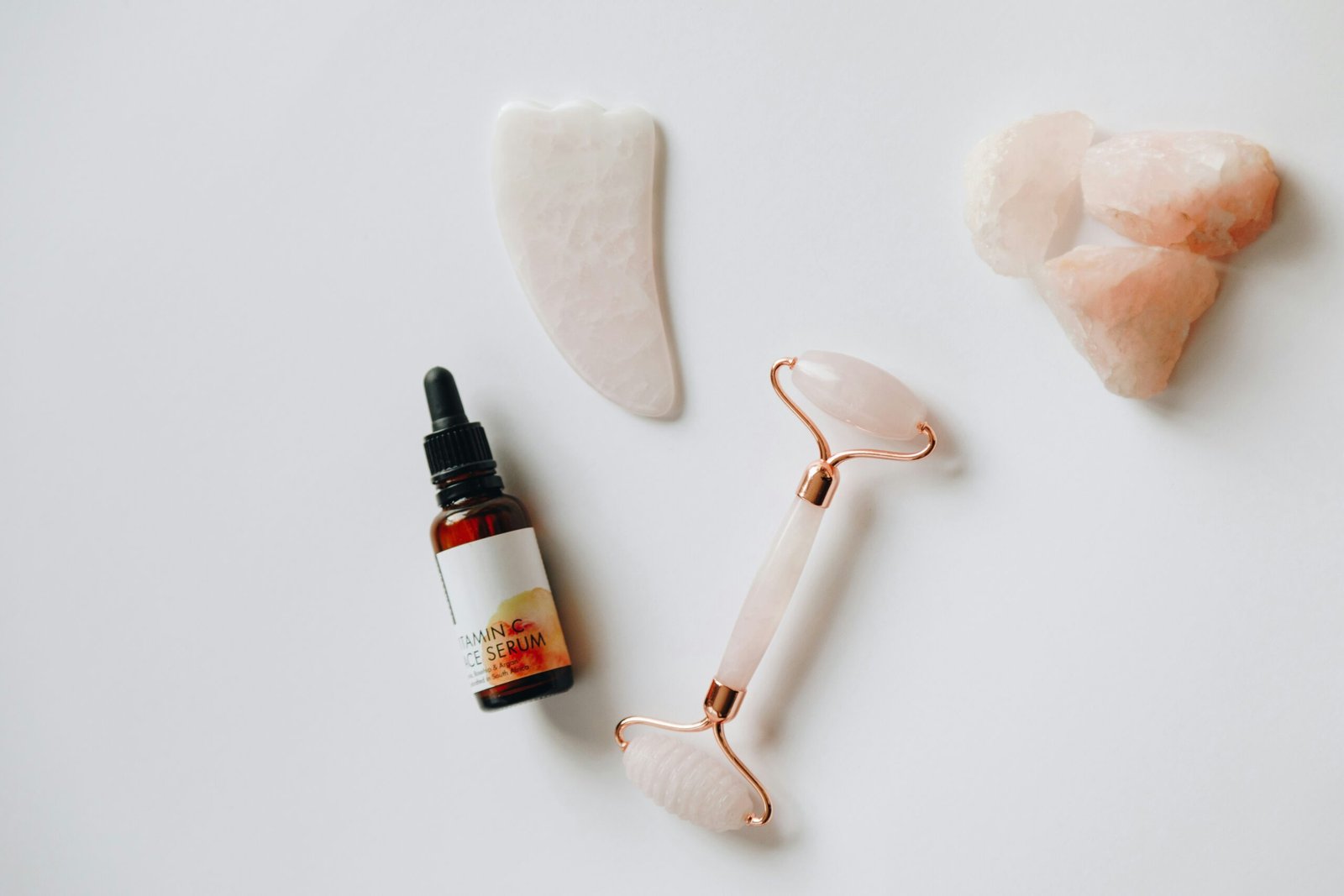Understanding Your Skin Type
Identifying your skin type is a crucial step in tailoring an effective skincare routine. The five primary skin types are oily, dry, combination, sensitive, and normal, each presenting unique characteristics and concerns. Understanding these distinctions allows you to select the right products to achieve optimal results.
To determine your skin type, consider conducting a simple test. Begin with a clean face, free from any products. After a few hours, observe how your skin feels. If it appears shiny, particularly in the T-zone (forehead and nose), you likely have oily skin. This skin type is characterized by enlarged pores and a propensity for acne and blackheads. In contrast, dry skin often feels tight or rough, displaying less elasticity and visible flakes. Individuals with dry skin may struggle with redness and irritation due to the lack of moisture.
Combination skin combines elements of both oily and dry skin, often exhibiting an oily T-zone while the cheeks may remain dry or normal. Sensitive skin, on the other hand, is prone to reactions, including redness, itching, and burning sensations, necessitating the use of gentle, hypoallergenic products. Normal skin, while less common, is balanced and generally free from severe issues, characterized by even texture and a healthy appearance.
In addition to identifying skin type, it is essential to understand the common concerns associated with each. Oily skin may lead to acne outbreaks, while dry skin can cause premature aging. Combination skin may require more attention to different areas, while sensitive and normal skin often demand tailored products that cater to their unique reactions and needs. Tailoring your skincare routine to your skin type ensures a more targeted approach to achieving flawless skin.
Essential Steps in a Skincare Routine
Establishing an effective skincare routine is crucial for maintaining healthy and radiant skin. The fundamental steps include cleansing, exfoliating, toning, moisturizing, and applying sunscreen. Each step serves a specific purpose and ensures that the skin receives the necessary care it deserves.
Cleansing is the first and most vital step. It removes dirt, oil, and impurities that accumulate throughout the day. A gentle cleanser should be used twice daily — in the morning and at night. This helps to maintain the skin’s natural moisture balance while effectively preparing it for the subsequent steps in the routine.
The next step is exfoliating, which aids in removing dead skin cells that can lead to a dull appearance and clogged pores. Exfoliation can be achieved through physical scrubs or chemical exfoliants, such as alpha and beta hydroxy acids. Ideally, this process should be conducted 1 to 3 times per week, depending on skin sensitivity and type. It is essential to choose products formulated for one’s specific skin needs to avoid irritation.
Toning follows exfoliation and further prepares the skin for enhanced absorption of subsequent products. Toners can help restore the skin’s pH balance and provide additional hydration. It is beneficial to choose an alcohol-free toner that includes hydrating ingredients. Toning can be performed twice daily, further enhancing the skin’s texture and glow.
A well-fortified moisturizer is crucial for every skin type, as it hydrates and protects the skin barrier. It is recommended to use a product that aligns with individual skin concerns. Applying moisturizer should occur after cleansing and toning, and ideally, twice a day. This step ensures that the skin remains adequately hydrated throughout the day.
Lastly, applying sunscreen during the daytime is non-negotiable. It shields the skin from the sun’s harmful UV rays and prevents premature aging. A broad-spectrum sunscreen with an SPF of at least 30 should be applied every morning, even on cloudy days. Reapplication every two hours is advised for optimal protection.
Furthermore, incorporating a nighttime routine is equally essential. Night creams or serums enriched with active ingredients can effectively support skin repair during sleep. Having a dedicated evening regimen complements daytime care and promotes a more youthful and healthy complexion.
Key Ingredients to Look For
When embarking on a journey towards achieving flawless skin, understanding the key ingredients in skincare products is crucial. These ingredients are often the difference between a mediocre product and one that truly enhances skin health. Among the most beneficial ingredients are hyaluronic acid, retinol, salicylic acid, vitamin C, and various natural oils, each offering unique advantages.
Hyaluronic acid is well-known for its exceptional ability to retain moisture, making it ideal for dry or dehydrated skin. Its capacity to bind up to 1,000 times its weight in water helps to plump the skin, reducing the appearance of fine lines and creating a more youthful look. For those with oily skin or acne-prone areas, salicylic acid can be a game-changer; it penetrates pores to exfoliate and remove excess oil, effectively helping to prevent breakouts.
Another standout ingredient is retinol, a derivative of vitamin A that promotes cell turnover. It is particularly beneficial for mature skin, as it helps to diminish signs of aging, such as wrinkles and uneven texture. However, this powerful ingredient can cause irritation, so it is essential to introduce it gradually and monitor skin reactions.
Vitamin C is a potent antioxidant that brightens skin and combats free radicals, contributing to a more even complexion. It aids in reducing pigmentation and stimulates collagen production, making it a valuable inclusion in any skincare routine.
Finally, natural oils, such as jojoba or argan oil, offer hydration and nourishment suitable for various skin types. These oils can provide essential fatty acids and antioxidants without clogging pores, making them versatile choices for both dry and oily skin types.
Understanding these ingredients and their specific functions can empower consumers to make informed decisions, tailoring their skincare regimens to address individual concerns. Always read labels carefully to identify which combinations work best for your unique skin demands.
Product Recommendations and Routine Customization
Choosing the right products for your skincare routine is crucial for achieving flawless skin. The best approach is to tailor your choices based on your specific skin type, lifestyle, and any particular concerns you may have. Below is a curated selection of product recommendations categorized by skin type, featuring options suited for both high-end and budget-friendly preferences.
For Oily Skin: A gentle foaming cleanser, like the La Roche-Posay Effaclar Purifying Foaming Gel, works effectively to remove excess oil without stripping the skin. Pair it with a lightweight, non-comedogenic moisturizer such as Neutrogena Hydro Boost Gel Cream. For added hydration and balancing, incorporate a salicylic acid serum, like Paula’s Choice CLEAR Anti-Redness Exfoliating Solution. Lastly, don’t neglect sunscreen; a matte-finish option like EltaMD UV Clear is ideal.
For Dry Skin: Start with a creamy cleanser, such as Cetaphil Gentle Skin Cleanser, which hydrates while cleansing. A rich moisturizer, like CeraVe Moisturizing Cream, will replenish moisture effectively. For serums, opt for a hyaluronic acid formulation, like The Ordinary Hyaluronic Acid 2% + B5, to boost hydration levels. Finally, ensure protection from UV rays with a moisturizing sunscreen, such as La Roche-Posay Anthelios Melt-in Milk Sunscreen.
For Combination Skin: A gel cleanser, like Fresh Soy Face Cleanser, can help balance oily and dry areas. Pair it with a balancing toner, such as Kiehl’s Blue Herbal Gel Cleanser. Use a lightweight moisturizer and a vitamin C serum to brighten the skin and even out tone. A broad-spectrum sunscreen like Neutrogena Ultra Sheer Dry-Touch is recommended.
It’s essential to patch test any new product on a small area first to check for adverse reactions. Introduce new products one at a time, allowing your skin to adjust. Moreover, seasonal changes and lifestyle factors may necessitate adjustments in your skincare routine. For instance, in winter, consider richer moisturizers, while in summer, lightweight formulas may work better. Pay attention to your skin’s response, and don’t hesitate to modify your regimen as needed.



